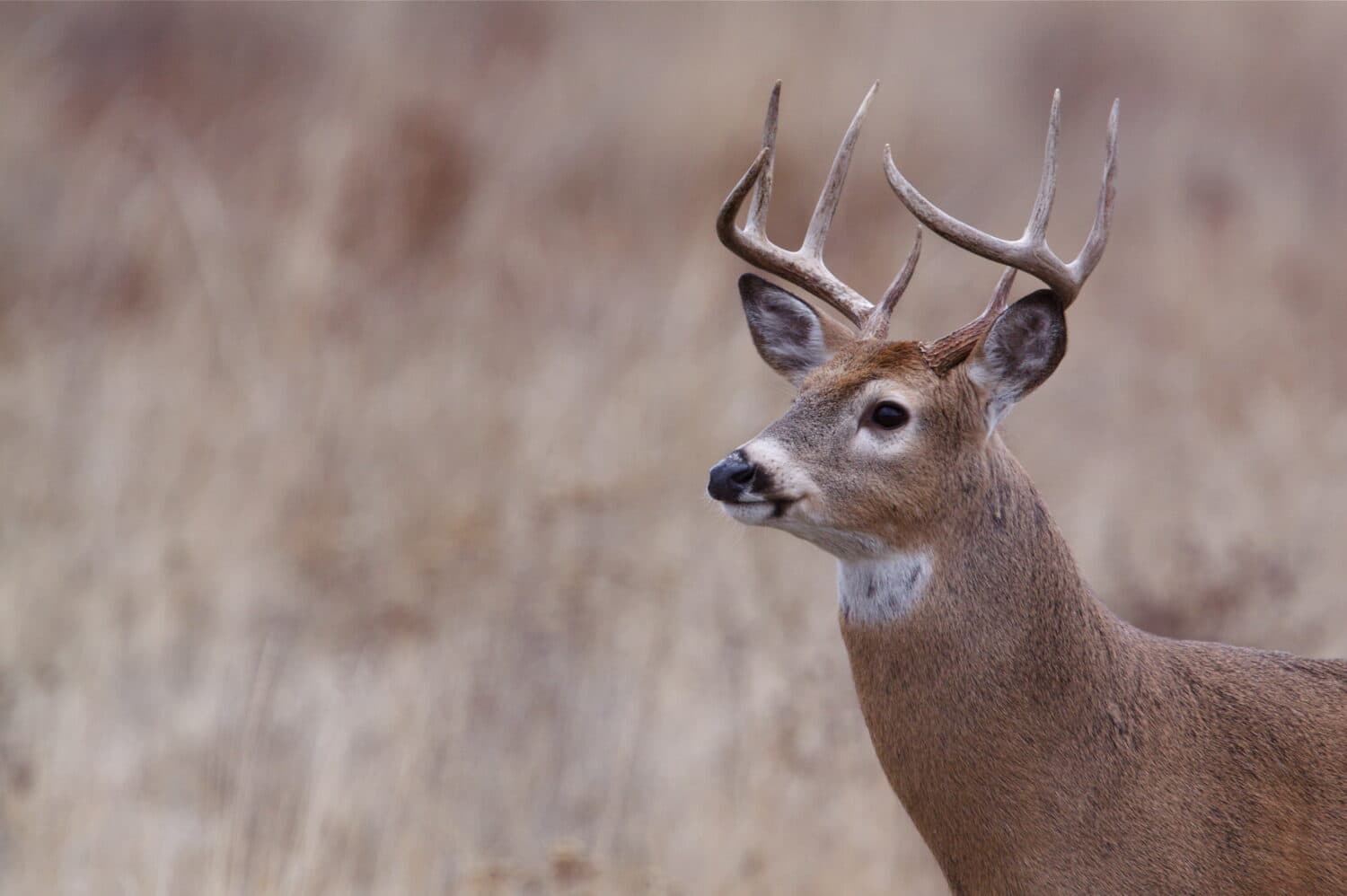Whitetail deer are very common in Oklahoma. There are about 750,000 or more whitetail deer in the state. Also in Oklahoma are mule deer, although the population is significantly smaller at approximately 2,000 to 3,000. With this massive population of whitetail deer, you can imagine how popular whitetail deer hunting is throughout the state. Can you guess the size or score of the largest whitetail deer ever caught in Oklahoma? Follow along to find out.
What is the Largest Whitetail Deer Ever Caught in Oklahoma?
The largest whitetail deer ever caught in Oklahoma scored 247 2/8, although this is just the record for the largest non-typical whitetail deer. Bill M. Foster caught the largest non-typical whitetail deer in 1970 and has held the record since. How does the typical whitetail deer record compare? It’s a lot smaller, but just as impressive. Jason L. Boyett caught a 192 5/8 scoring whitetail deer in 2007.

According to the Boone and Crockett Club, the largest whitetail deer ever caught in Oklahoma scored 247 2/8.
©Tom Reichner/Shutterstock.com
About Whitetail Deer
Whitetail deer are very common animals in North America. There are multiple subspecies and they vary a lot in size. Some can weigh as little as 55 pounds! So, just how many whitetail deer are there in the United States? In the United States, there are over 35 million deer, and most are whitetail deer. In Texas alone, there are at least 5 million. Interested in learning more about these amazing mammals? Keep reading!
Appearance and Size
As their name suggests, a whitetail deer is easy to identify as they have short white tails. The white though is more noticeable when their tails shoot upright. The white can be a warning signal to other nearby deer of danger. It’s also a sign of alertness. Whitetail deer range a lot in coat color and size depending on the subspecies and their environment. The changing seasons also determine the color of a whitetail deer’s coat. For instance, during the spring and summer, whitetail deer have reddish-brown coats, but in winter, their coats are thicker and duller.
One of the smallest whitetail subspecies is found in the Florida Keys. These small deer average about 77 to 110 pounds, although more often than not they weigh less than 100 pounds. Male whitetail deer, also known as bucks, weigh more than females, does. Some of the larger subspecies can weigh as much as 500 pounds.
Another well-known characteristic of the whitetail deer is the antlers. Their antlers regrow every year. Males grow antlers, and in the beginning stages, they are covered in a light, velvet-like coating that protects them. Whitetail deer antlers are very wide and heavy. They may weigh as much as 40 pounds! Although not as common, some female whitetail deer also develop antlers. However, this is only about one out of 10,000.

©Amy Lutz/Shutterstock.com
Distribution and Habitat
Whitetail deer have a wide distribution in North America. It’s easier to ask where whitetail deer don’t live than where they do. Whitetail deer are common in Oklahoma. They are often easiest to spot during dusk or dawn in open clearings and near rivers or creeks.
Whitetail deer aren’t picky about their environment. This deer species can live in heavily wooded areas near open clearings in remote places or close to neighborhoods. As cities develop and grow, whitetail deer, like other animal species, are forced to move closer and adapt to the changes.
Diet
So, what do whitetail deer eat? These adorable deer have a wide diet that changes depending on the season and the food’s availability. During spring and summer, whitetail deer focus on consuming fruits and lush green plants. This changes drastically in winter. During winter, whitetail deer mainly consume twigs, nuts, and fall crops like corn.
Predators
Whitetail deer have a lot of natural predators. Although fast and equipped with keen senses, this deer species is hunted by many animals, including humans. Common larger predators include mountain lions, black bears, brown bears, and sometimes American alligators. They may also be eaten by coyotes, wolves, and foxes. Young and sick whitetail deer though are most vulnerable. To protect themselves from whitetail deer, they hide and run. Whitetail deer can reach speeds of up to 30 mph.
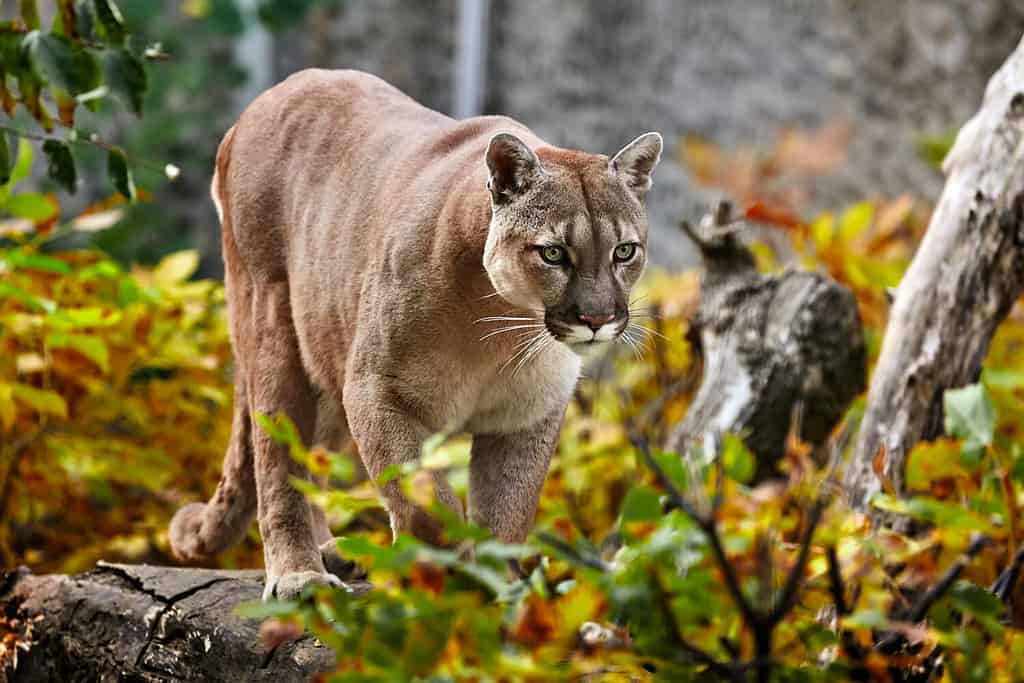
A common whitetail predator is the
mountain lion
.
©Evgeniyqw/Shutterstock.com
Other Mammals in Oklahoma
There are a lot more mammals in Oklahoma other than whitetail deer, although they are one of the most common. Listed below are other animals you may encounter in Oklahoma and some fun facts about each!
Bobcat
Bobcats can also be found in Oklahoma. They live in every county in the state. These medium-sized wild cats can weigh up to 30 pounds. Although abundant in North America, bobcats are rarely spotted. They are quick, quiet, and stealthy. Bobcats are mainly nocturnal hunters, although they can be active at any time. They are known for their stubby, black-tipped bobbed tail. Bobcats also have black-tufted ears and are slightly larger than domestic pet cats.
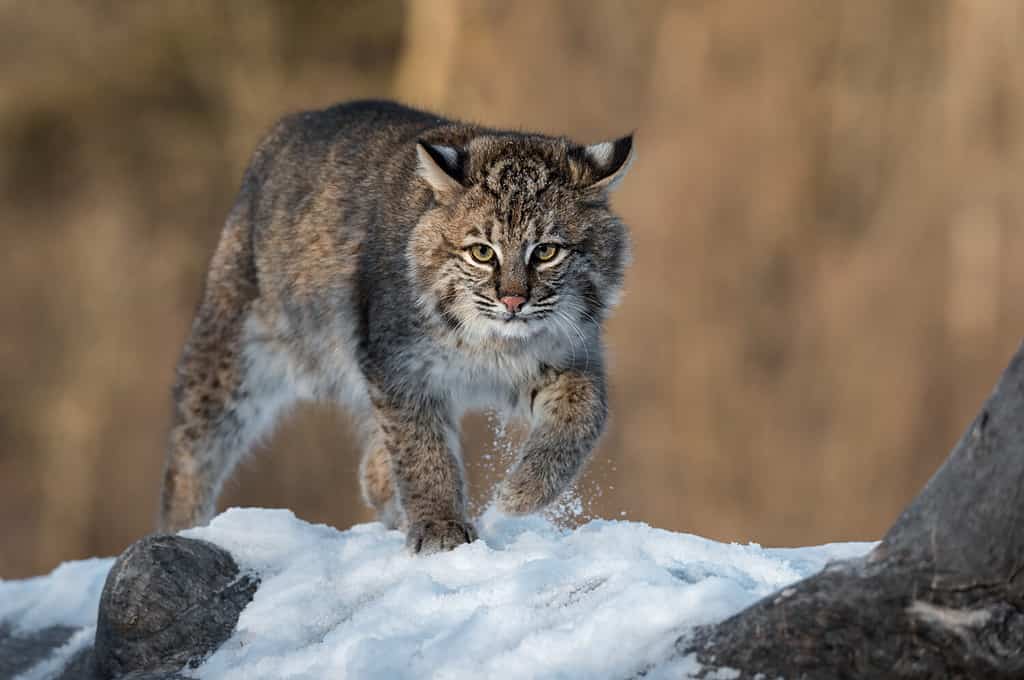
Bobcats are common in Oklahoma. They are found in every county.
©Holly Kuchera/Shutterstock.com
Coyote
The next Oklahoma mammal on our list is the coyote, another very common animal in North America. Interestingly, coyotes are very resilient and adaptable. Despite overdevelopment and construction, coyote populations only continue to increase as they inch closer to larger cities and suburbs. Coyotes range a lot in size and appearance. They have brown or grey thick coats. They may also have more reddish fur. Coyotes can be very vocal. They howl to communicate with each other and may also bark, yip, and hiss. If you live in Oklahoma and have a pet, experts recommend not leaving them outside unattended as sometimes coyotes hunt for dogs and cats.
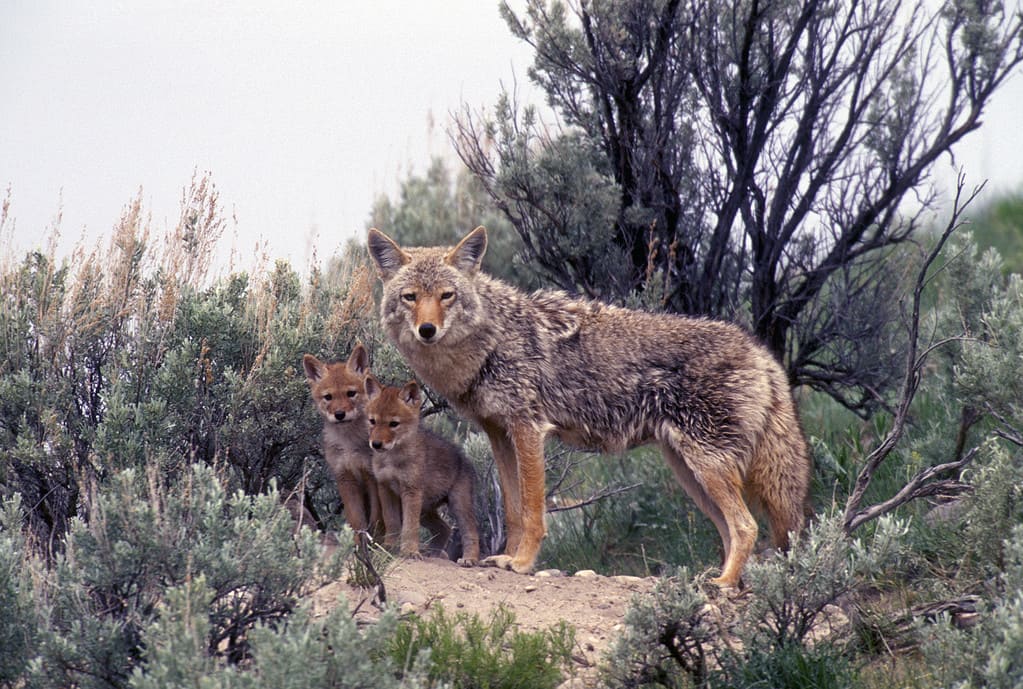
Coyotes have a wide range. They are sometimes even found in large cities.
©KenRinger/iStock via Getty Images
Black-tailed Prairie Dog
Also in Oklahoma, is the black-tailed prairie dog. This prairie dog species is native to parts of Central North America from the United States-Canada border to the United States-Mexico border. They are more abundant in the United States than in Mexico or Canada. Black-tailed prairie dogs live in prairie lands and desert grasslands. They can be found in areas with tall vegetation which they use as cover against predators. Although found in Oklahoma, they are rare. According to Oklahoma State University, these animals only occupy about 60,000 acres of grasslands in Oklahoma, which is just a small fraction of their native range.

Black-tailed prairie dogs are uncommon in Oklahoma.
©RMMPPhotography/Shutterstock.com
Big Brown Bat
One of the most well-known bat species in Oklahoma is the big brown bat. Big brown bats are found across North America, the Caribbean, and the northern portion of South America. Although considered large for a vesper bat species, they only weigh between 0.53 and 0.92 ounces. They also have a wingspan of 12.8 to 13.8 inches. Because of their abundance, they are currently listed as Least Concern on the IUCN Red List. You can see big brown bats in parks, neighborhoods, farms, and forests in Oklahoma.

The big brown bat is abundant in suburban agricultural areas.
©Jay Ondreicka/Shutterstock.com
Black-tailed Jackrabbit
Last but not least is the black-tailed jackrabbit. This unique rabbit is easy to identify from their long and wide ears that stand upright. Black-tailed jackrabbits are common rabbits in the western United States and Mexico. They are listed as Least Concern on the IUCN Red List. These long-eared rabbits can live at elevations from sea level up to 10,000 feet! They have powerful legs and can weigh up to 6 pounds. Currently, multiple subspecies exist, although the exact number is often debated. This jackrabbit species mainly consume shrubs, grasses, twigs, and small trees. They aren’t picky and can live in a wide range of habitats.
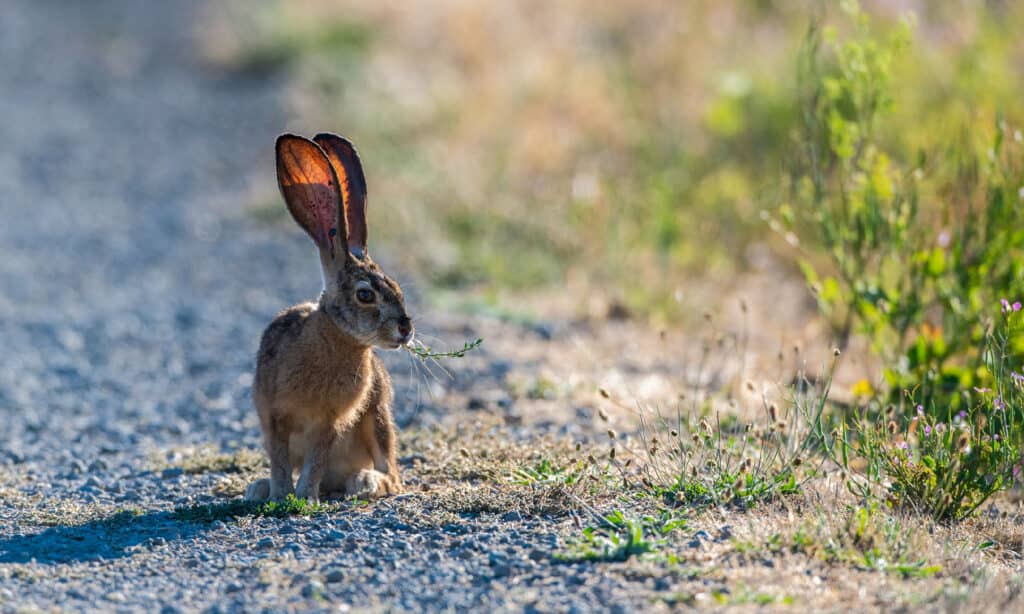
Black-tailed jackrabbits can weigh up to 6 pounds.
©iStock.com/zhuclear
Thank you for reading! Have some feedback for us? Contact the AZ Animals editorial team.

